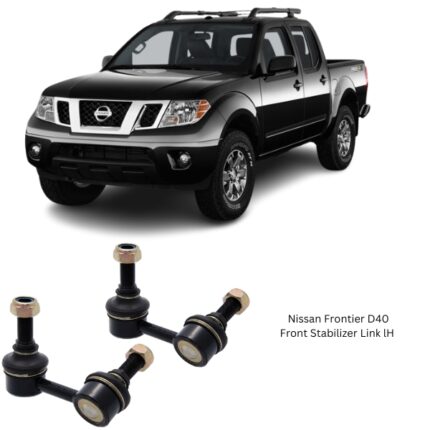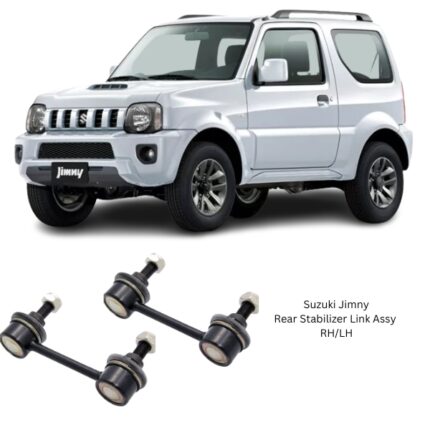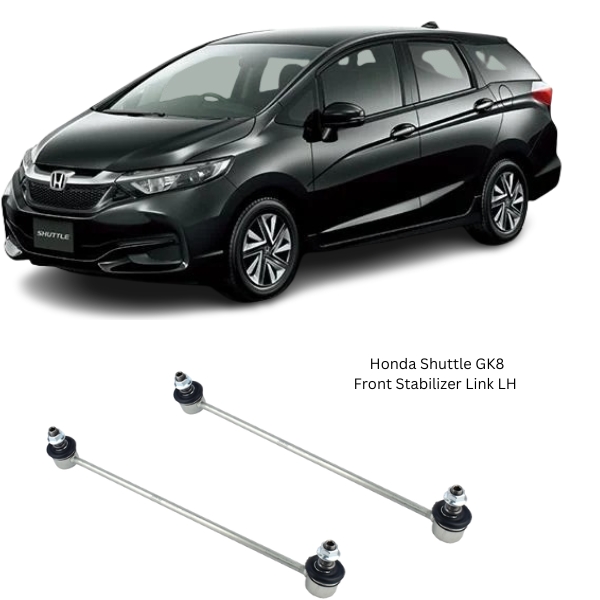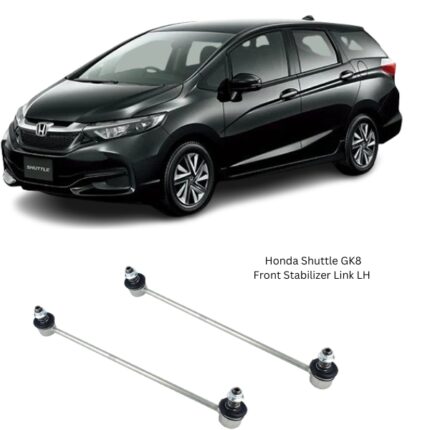Get Honda Shuttle GK8 Front Stabilizer Link LH 51325-T5A-003 in Kenya
The Front Stabilizer Link LH, also referred to as the front sway bar link (left-hand side), is a vital component within the front suspension system of a vehicle. Although compact in design, its role in controlling body movement and enhancing overall ride stability is substantial. This component connects the stabilizer (anti-roll) bar to the suspension system on the vehicle’s left side and ensures proper coordination between both front wheels during motion.
As a suspension component, the stabilizer link transmits the force generated by the road surface from one side of the vehicle to the other. It helps balance the body during cornering, reduces excessive body roll, and improves handling response. This improves vehicle control, occupant comfort, and road safety—especially under dynamic driving conditions or during abrupt directional changes.
Purpose and Functionality
The primary function of the Front Stabilizer Link LH is to link the anti-roll bar to the suspension strut or control arm on the left-hand side of the vehicle. It plays a crucial role in balancing the suspension forces between the two front wheels during cornering or when driving over uneven terrain.
Key Functions:
-
Body Roll Reduction
The link allows the anti-roll bar to resist body lean by distributing the load between both sides of the suspension during sharp turns or lane changes. -
Force Transmission
Transmits suspension movement from the left wheel to the stabilizer bar, which then transfers it across to the right wheel to help keep the car level. -
Enhanced Vehicle Handling
Reduces understeer or oversteer tendencies, helping the vehicle maintain balance and steering response during spirited or evasive driving. -
Stabilization During Road Bumps
Works with the stabilizer bar to absorb road inconsistencies, keeping the vehicle from swaying side-to-side unnecessarily.
Construction and Design
The Front Stabilizer Link LH is engineered for strength, durability, and flexibility to handle constant suspension articulation and road-induced stresses. Its compact yet rugged design ensures consistent performance under heavy loads and extended service intervals.
Key Structural Components:
-
Ball Joints (or Bushings)
Present at both ends of the link rod, these joints allow rotational movement and vertical articulation. Ball joints are enclosed in dust boots and packed with high-grade grease. -
Steel or Alloy Link Shaft
A rigid bar that forms the body of the stabilizer link. Typically made from hardened steel or aluminum alloy, coated for corrosion resistance. -
Threaded Studs
Machined ends of the shaft or ball joints allow bolt-on installation to both the sway bar and control arm. -
Sealed Dust Boots
These rubber or thermoplastic boots protect the ball joints from contamination, debris, and moisture ingress.
Materials:
-
High-Tensile Steel or Forged Alloy
Used for strength and resistance to flexing under dynamic loads. -
Synthetic Rubber/Polyurethane
Utilized in dust boots and bushings for flexibility and longevity. -
Protective Coatings
Anti-rust plating like zinc or phosphate to withstand corrosion in all weather conditions.
Performance Benefits
The Front Stabilizer Link LH contributes significantly to vehicle stability, comfort, and safety. When in optimal condition, it supports several performance aspects:
-
Minimized Body Sway
Reduces side-to-side rolling during cornering or emergency maneuvers. -
Consistent Suspension Behavior
Helps the front suspension respond uniformly to bumps and dips in the road. -
Improved Steering Precision
Maintains accurate suspension geometry and helps deliver responsive handling. -
Enhanced Ride Comfort
By reducing sudden weight transfer, the link contributes to a smoother ride. -
Longer Suspension Component Life
Distributes force more evenly, reducing stress on struts, control arms, and tires.
Common Failure Signs
Like other suspension components, stabilizer links wear out over time due to exposure to road debris, moisture, and constant motion. Early detection of wear can prevent more significant suspension damage.
Signs of a Worn or Faulty Stabilizer Link LH:
-
Clunking or Rattling Sounds
Usually heard when driving over potholes, speed bumps, or rough roads—often a sign of worn ball joints. -
Poor Handling and Excessive Roll
The vehicle feels less stable during cornering, especially at higher speeds. -
Uneven Tire Wear
Faulty links can result in improper weight distribution and tire contact. -
Steering Instability
The car may feel unpredictable or “loose” when turning. -
Visible Damage
Torn dust boots, bent shafts, or corroded ball joints can be identified during inspection.
Installation Overview
Replacing the Front Stabilizer Link LH is generally straightforward and doesn’t require disassembling major suspension components. However, attention to proper torque and alignment is critical.
General Replacement Procedure:
-
Lift and Secure the Vehicle
Ensure the car is safely raised and supported. -
Remove the Front Wheel
For access to the suspension components. -
Unbolt the Worn Link
Detach it from both the sway bar and suspension strut or control arm. -
Inspect Related Components
Check for excessive wear in the sway bar bushings, ball joints, and mount points. -
Install the New Link
Securely tighten mounting bolts to manufacturer specifications. -
Test Drive the Vehicle
Verify improved handling, stability, and absence of noise.
Note: It’s advisable to replace stabilizer links in pairs (left and right) to maintain uniform suspension response.
Maintenance Tips
-
Routine Inspection
Check the stabilizer link during regular oil changes or tire rotations. -
Keep Dust Boots Intact
Damaged boots lead to premature joint wear. -
Replace When Symptoms Appear
Don’t wait for the link to fail completely, especially if handling is already affected. -
Avoid Overloading the Suspension
Minimize aggressive driving over potholes or speed bumps to extend part life.
Why Timely Replacement Matters
Delaying the replacement of a worn Front Stabilizer Link LH can have negative consequences on overall vehicle dynamics:
-
Increased stress on the struts, control arms, and anti-roll bar
-
Reduced effectiveness of the stabilizer system
-
Potential for unsafe driving characteristics in emergency maneuvers
-
Higher risk of suspension misalignment and tire wear
A properly functioning stabilizer link ensures the left front suspension works in harmony with the rest of the system, preserving comfort and safety.
Follow us on Facebook for more parts.





Reviews
Clear filtersThere are no reviews yet.